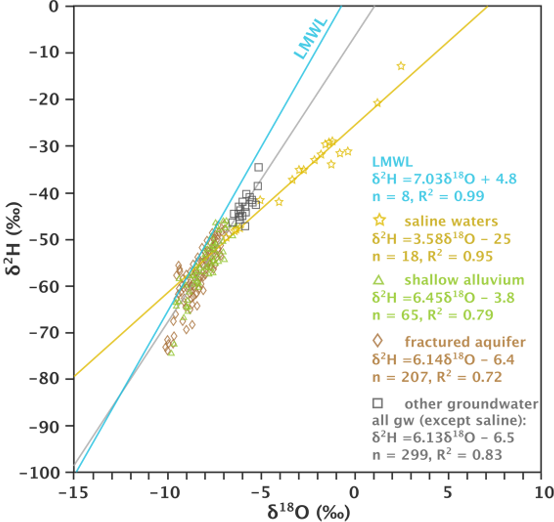7.3 Selective Recharge of Heavy Rains
Vogel and Van Urk (1975) sampled groundwater and precipitation in the semi-arid interior of southern Africa. They found stable isotopes in precipitation were highly variable, whereas stable isotopes in groundwater of each region was quite consistent. Further, the groundwater tended to be more isotopically negative than precipitation, indicating that recharge took place during precipitation events with more negative values, which are typically the larger rainfall events (as per the amount effect). Similar findings have been made by many workers, for example Dogramaci and others (2012) for another semi-arid region, the Pilbara in Western Australia (Figure 36) and Li (2018) near Beijing in China. Gat (1996) termed this phenomenon “selection”.

Figure 36 – Stable isotope data for the Hamersley Basin in Western Australia. The LMWL was calculated for only larger rainfall events (> 20 mm). The near coincidence of this line with the data from shallow alluvium and fractured rock aquifers suggests recharge for these aquifers is during large precipitation events. The low gradient of the saline waters line is evidence for substantial evaporation of these waters, providing evidence that the salinity is from concentration of salts resulting from the evaporation process. The ultimate source of the salts, from rock weathering or marine aerosol, would have to be proven by evaluating the balance of salts, such as dominance of bicarbonate over chloride, or magnesium over sodium (after Dogramaci et al., 2012).
